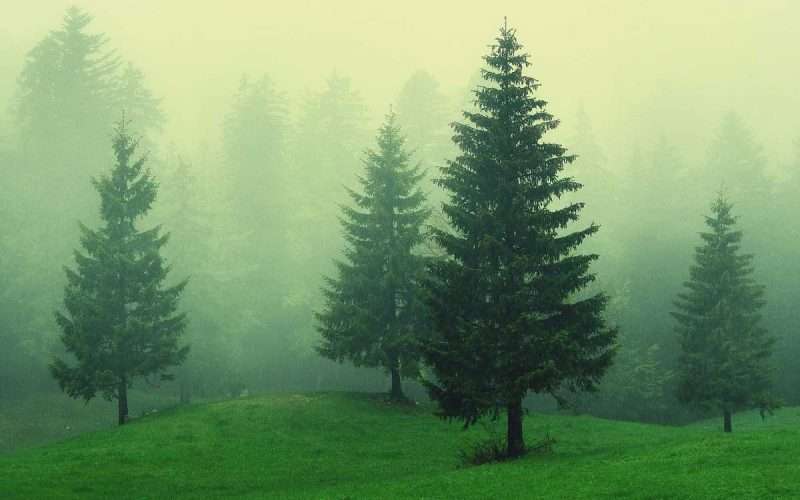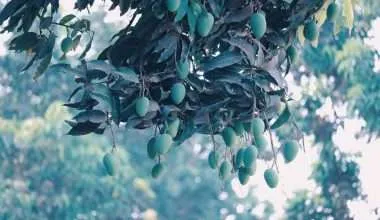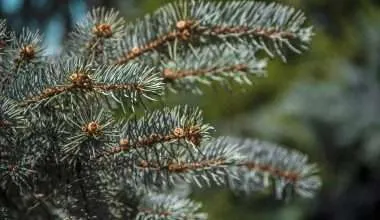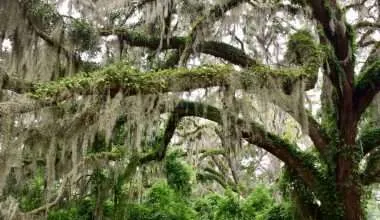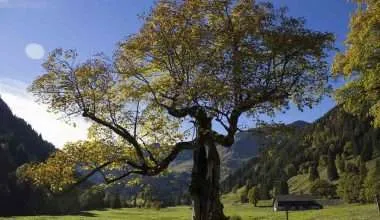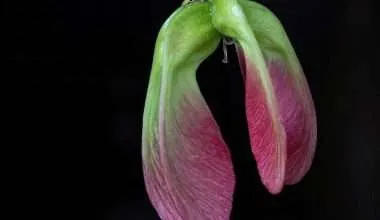Table of Contents Show
Think of trees and you think of beauty, peace, serenity, a feeling of freshness, an indescribable joy that you could never have felt otherwise. That is the power of trees. And who does not like these green-leafed beauties growing around them all the time?
However, when you are planning out your own garden, it is only natural that you should want to design and actually have the dream, outdoor space that you always wanted, as soon as it is possible.
That is impossible however, because no plant can grow overnight. In fact, if you’re planning on taking up gardening, then it is only prudent to realize that you need to cultivate patience, a lot of it actually, along with all those seedlings you are planning on setting out in your yard. That is because no plant will be able to grow overnight.
There are however, many plant and tree species that grow faster than others. Choosing one of the faster growing plants will mean that you will be able to have your beautiful garden sooner rather than later.
10 of the Fastest Growing Trees on Earth!
The growth rate of every tree species varies from each other. At this point however, and more particularly if you are a first time gardener, it is important to remember one basic rule.
The environment that is provided to any sapling will affect its growth rate. So if you are planting two saplings but over-watering one of them, you could impair its growth!
Each type of tree has its own set of specifications and requirements and these must be fulfilled in order to provide the optimum conditions to enhance the plant’s growth.
So here are the fastest growing trees that you could grow in your own backyard:
1. Hybrid Poplar
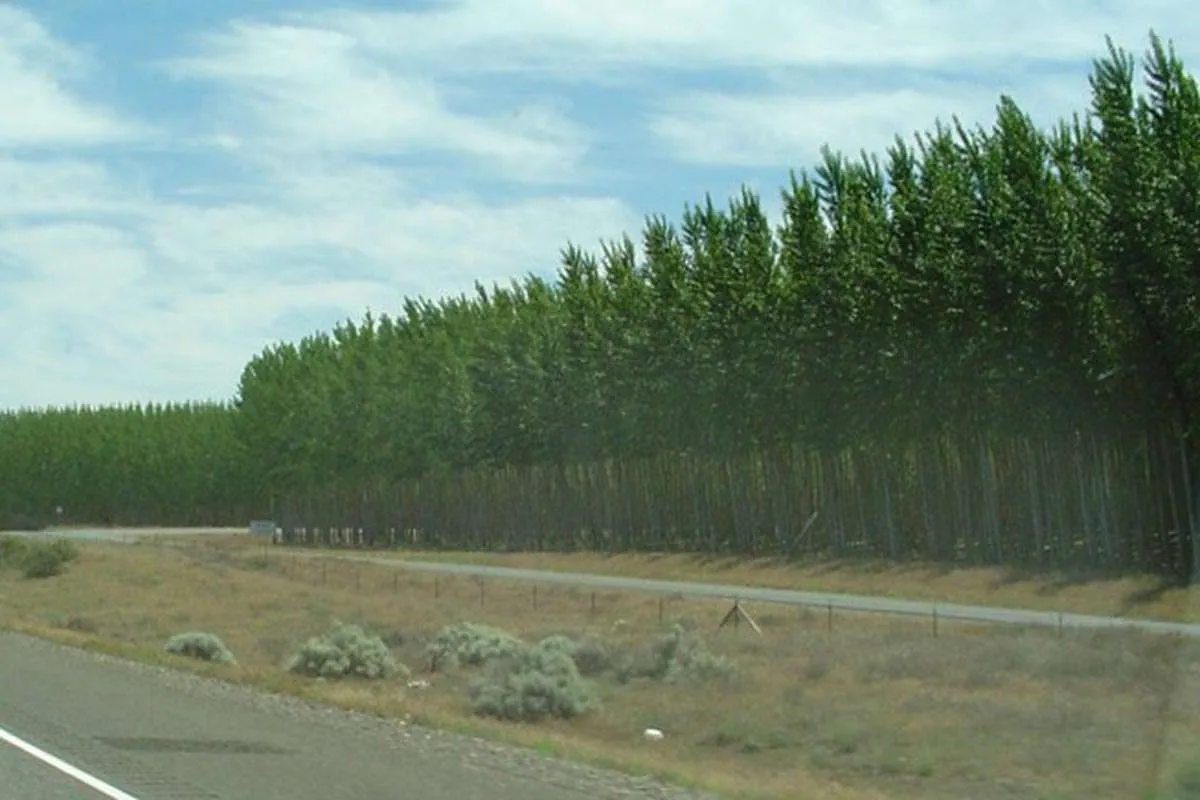
The Hybrid Poplar trees are a fast growing, low maintenance species of trees. These trees are a perfect choice for shade trees or to act as a living privacy screen. These trees are fast to grow and manage to grow an impressive 5 to 8 feet in just a single year.
This particular species of trees is also very easy to maintain. They are resistant to most diseases and can grow in most types of soils and a variety of climate conditions. These features make them ideal to grow on your porch.
The Hybrid Poplar tree is also sometimes referred to as cottonwood. This tree manages to grow rapidly to a maximum height of about 50 meters in just 6 to 7 years. Making them the perfect choice for a quick shade tree in your garden.
Not only is this tree great for getting fast shade in your garden, it is also ideal for its aesthetic beauty in the autumn season. During the fall season, they exhibit a brilliant yellow foliage, while their leaves drop in winter.
The pyramidal shaped, hybrid poplar trees have triangular leaves that are 3-6 inches long and silvery-green on top with lighter green undersides. They are a hassle free treat for anyone who doesn’t have enough time or skills to maintain a garden.
2. Weeping Willow (Salix babylonica)
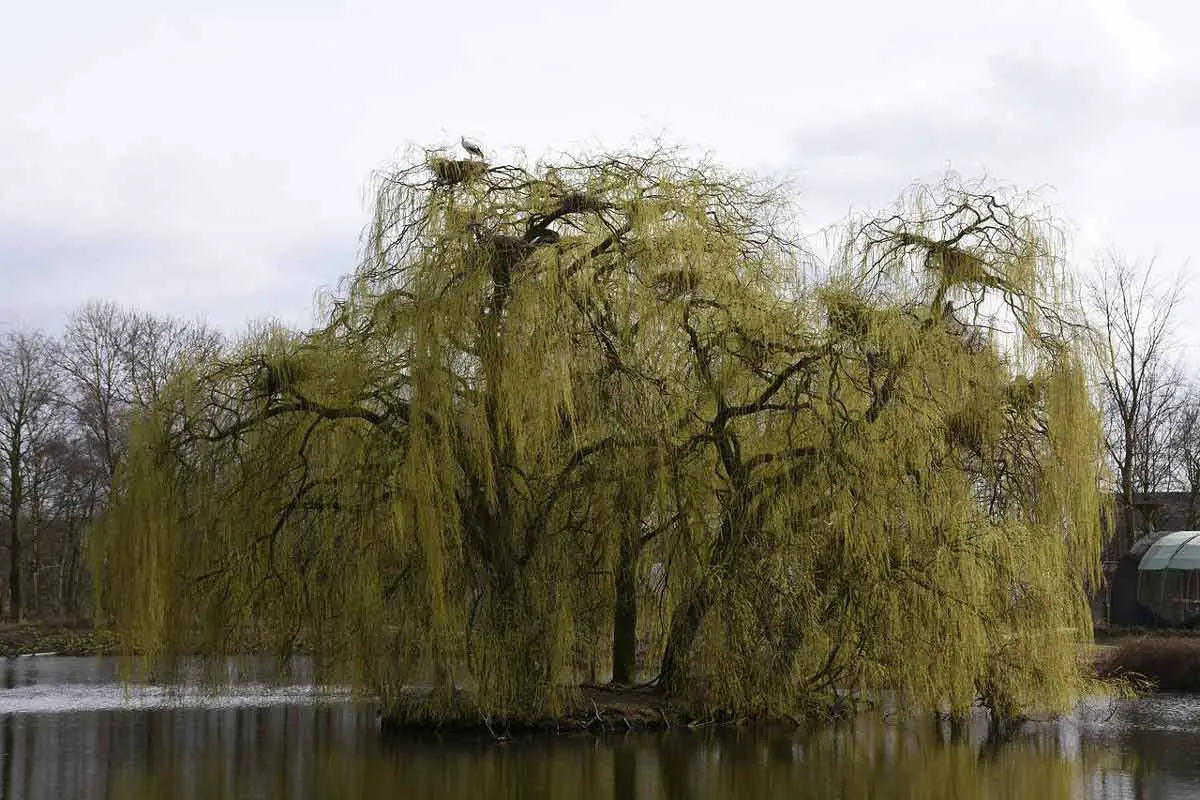
Both in look and history, the weeping willow is dramatic. Few trees offer as much beauty to the landscape as this one. Cuttings from this popular species were conveyed along trade routes from China early in the history of interstate commerce.
Because of its prevalence near the Euphrates River, the eminent botanist Linnaeus mistook it for the biblical willow and gave it the scientific name babylonica.
Later, Napoleon found solace in the shadow of a weeping willow during his exile on the island of St. Helena. After Napoleon was buried beneath his favorite tree, cuttings from it became a prized possession among his fans all over the world.
Salix babylonica is a medium- to large-sized deciduous tree that may reach heights of 20–25 meters. It grows quickly but has a limited lifetime of 40 to 75 years.
The shoots are yellowish-brown in color and have tiny buds. The leaves are alternating and spirally arranged, slender and light green, 4–16 cm long and 0.5–2 cm wide, with delicately serrate edges and long acuminate ends; in fall, they turn a gold-yellow.
It is dioecious, with male and female catkins on distinct trees, and the flowers are grouped in catkins produced early in the spring.
3. Quaking Aspen(Populus tremuloides)
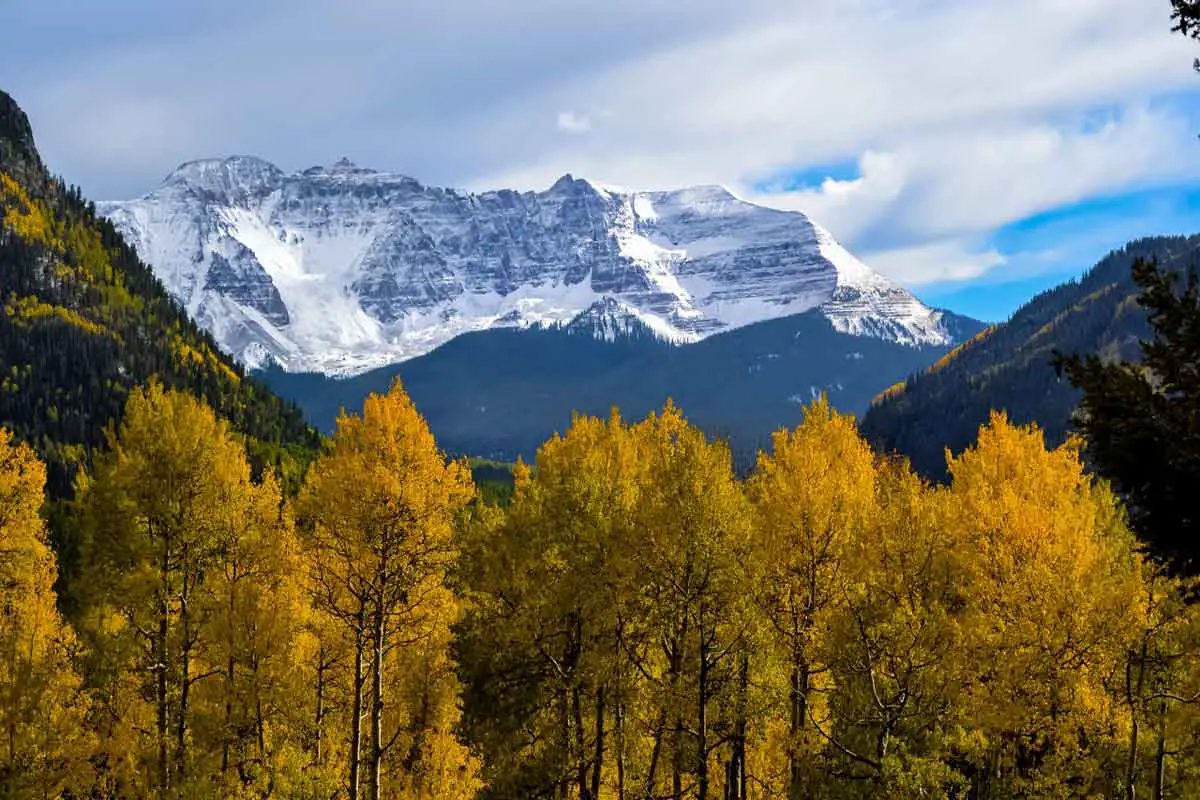
Aspens can often be seen to light up park hillsides with spectacular golden fall color. However, before you plant quaking aspen trees in your yard, make careful to educate yourself on the facts about them. A homeowner may encounter issues with cultivated aspens.
The quaking Aspens are part of the Hybrid Poplar family of trees and thus likewise are as fast growers as other Hybrid Poplar trees. Though the Aspen trees are widely known for being succession trees in the wild.
This means that these trees will grow and spread rapidly but will act as a cover for seedlings of other species. Over time, as the forest grows, the Aspen trees die out.
4. October Glory Red Maple
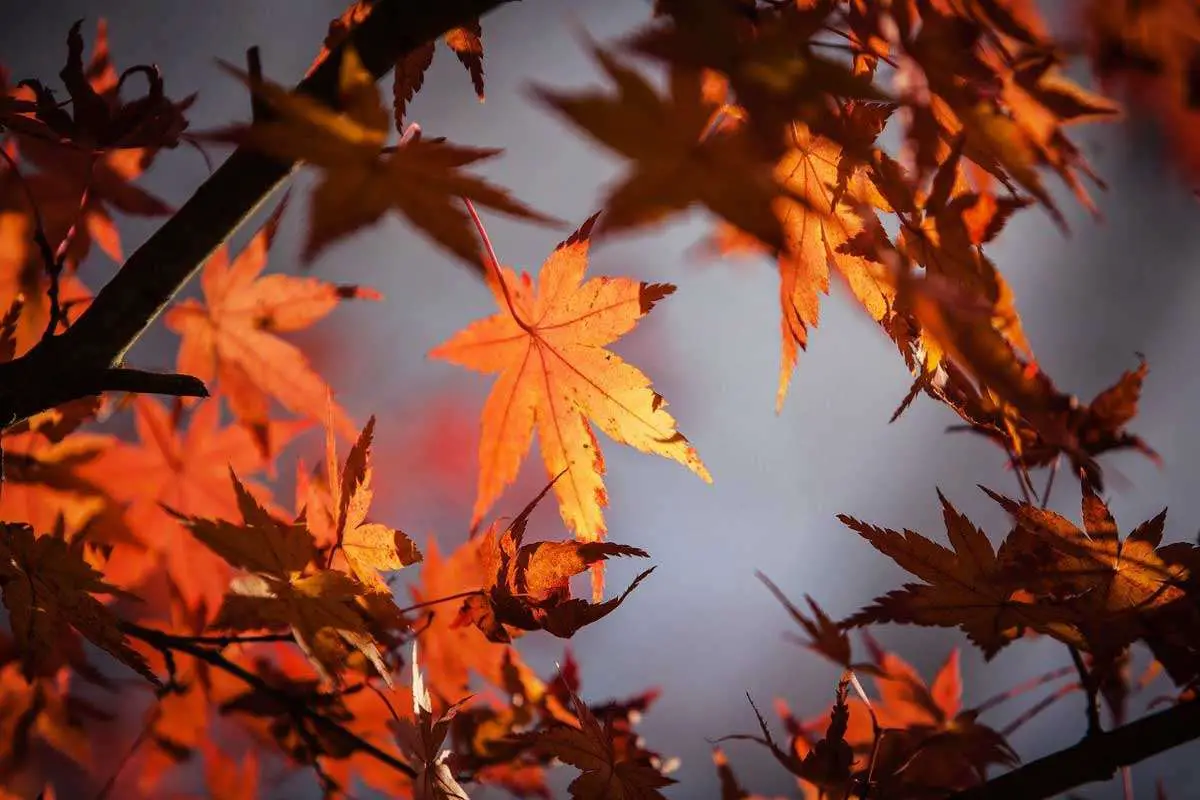
The October Glory Red Maple tree has been selectively bred to produce immense amounts of brilliantly colored foliage. This tree dazzles with stunning colors for an entire month during the fall season.
This species of tree is able to adapt to almost any climate region across the US and is easy enough to grow. The high adaptiveness that this tree provides along with its rapid growth rate are what make this one of the most attractive maple trees there is.
You’ll be treated to one of the most vivid displays of any tree in your area for several weeks. In fact, the display of orange, yellow, and red leaves lasts far longer than that of most other Maples.
Because of its upward growth, it would look stunning as a focal point in your yard or equally at home among other plantings. It may grow up to 2 feet every year or even more depending on the environmental and soil conditions.
5. Arborvitae Green Giant
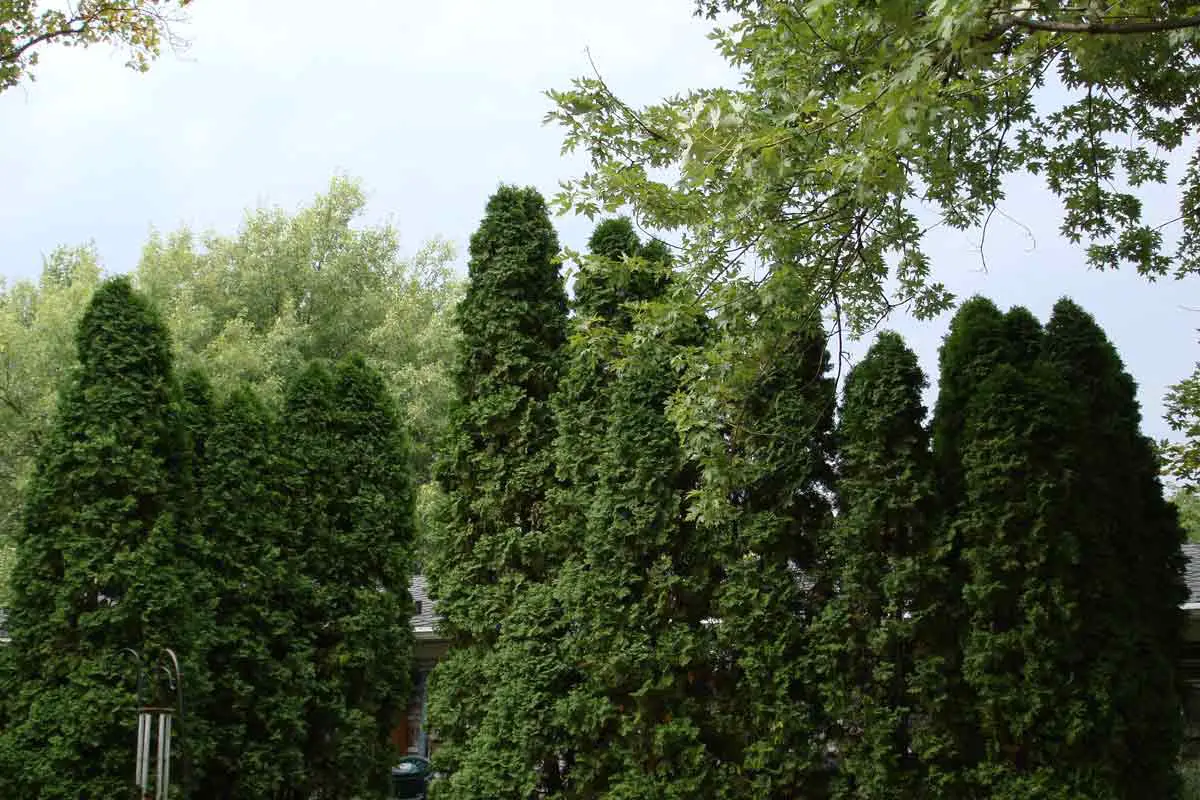
The green giant arborvitae is a huge, strong, fast-growing evergreen that can grow up to 3 feet each year until it reaches maturity. Its natural pyramidal to conical shape is characterized by lush, rich green foliage that darkens or bronzes significantly in the winter.
This hybrid tree rapidly accelerates its height as it grows an exceptional 60 feet when fully matured. The green arborvitae is especially useful to plant as a screen, hedge, windbreak or even single specimen to dazzle your home garden.
6. River Birch(Betula nigra)
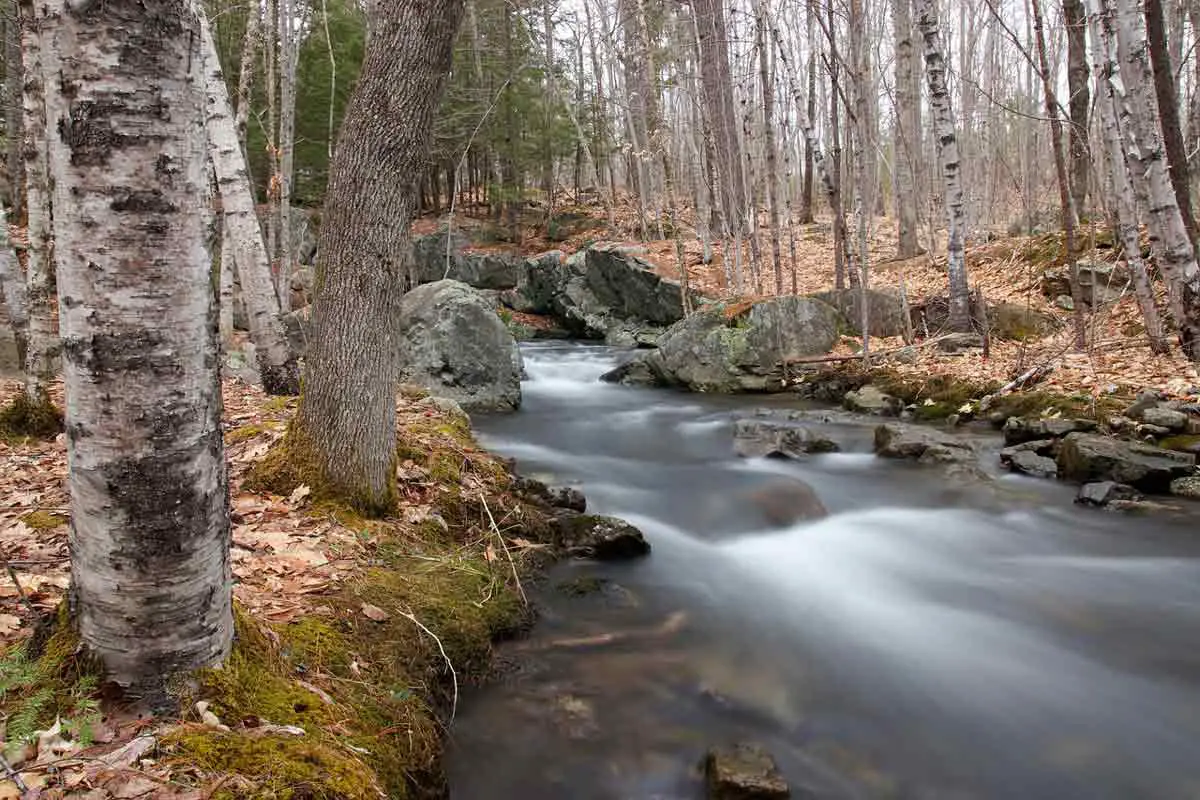
The river birch grows naturally along riverbanks, as the name implies. However, it is more commonly used as a landscaping tree, which may be planted in practically any place in the United States.
The species is mainly regarded for its relatively quick growth, tolerance to dampness, and even moderate drought. The distinctive curled bark, spreading limbs, and resistance to birch borer are also some of the attractive features that this species has.
The river birch is not as well-known as many maples and oaks, but it is on its way. One of its varieties was even selected for the Society of Municipal Arborists’ Urban Tree of the Year in 2002.
The River Birch is also commonly planted along riverbanks so that the roots may hold the ground and prevent soil erosion. This along with the unique tree bark and fall colors that this tree sprouts make it a truly remarkable tree to have in your garden.
7. Dawn Redwood(Metasequoia)
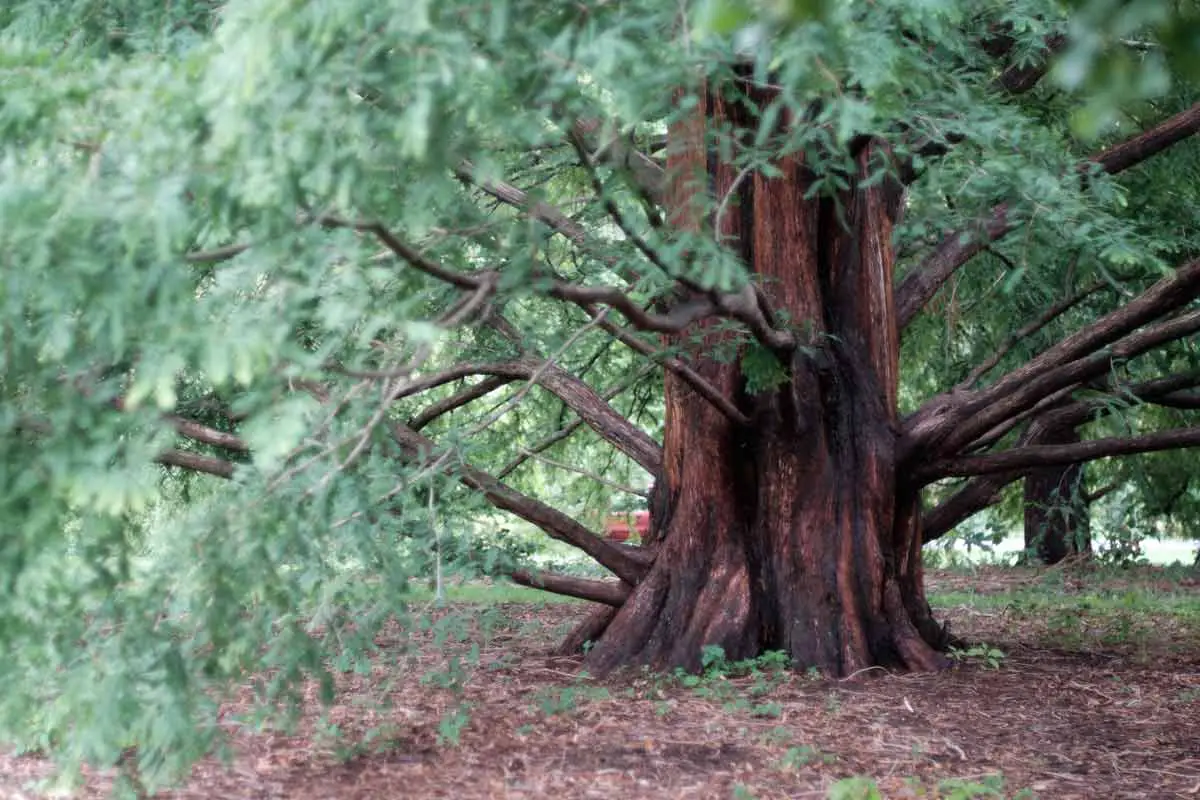
The Dawn Redwood is one of few trees that has existed since the age of the great and mighty dinosaurs, though it probably suits modern plantations more. The Dawn Redwood is a deciduous conifer tree with a nice uniform pyramidal shape.
The tree grows rapidly to about 120 feet in a timespan of just 30 years. This means on average the tree gains about 4 feet in height per annum. As the tree grows its shape changes from the nearly uniform pyramidal shape to a more rounded crown-like shape in maturity.
The Dawn Redwood has bright green feathery leaves that turn to an orange or somewhat reddish brown in the fall season. These bright spectacular colors are often an aesthetic wonder to see in late fall.
The Dawn Redwood grows rapidly in a variety of soil conditions though in ideal conditions, to no surprise, it tends to grow faster.
8. Leyland Cypress
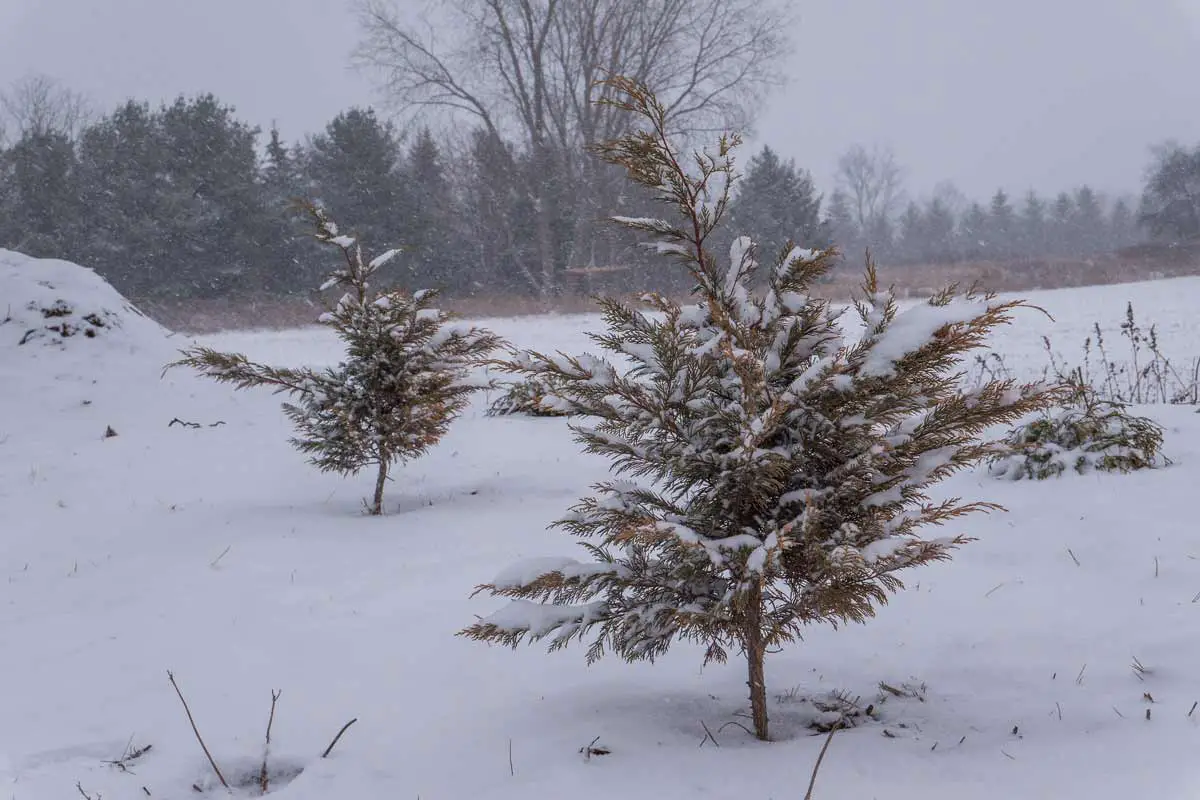
Leyland cypress trees grow quite quickly and may provide a lush, natural privacy screen in only a few years. These are low-maintenance evergreens that retain their natural bluish-green, needled leaves all year round.
The Leyland cypress trees can also tolerate a wide range of soil types and sunshine levels. The Leyland cypress trees are ideal trees for blocking off unpleasant noise, shielding a view of a busy roadway, or gaining seclusion from your neighbors.
The pyramidal, conical form of Leyland cypress trees is characterised by flattened sprays of bluish-green, needled leaves. If not trimmed, they can reach a height of 40-60 feet and a spread of 15-20 feet.
Leyland cypress trees reach this considerable height at a rapid pace, growing 3 feet or more by their second year. They flourish best in the presence of plentiful sunlight but can also grow healthy with partial sunlight throughout the day.
9. Paper Birch(Betula papyrifera)
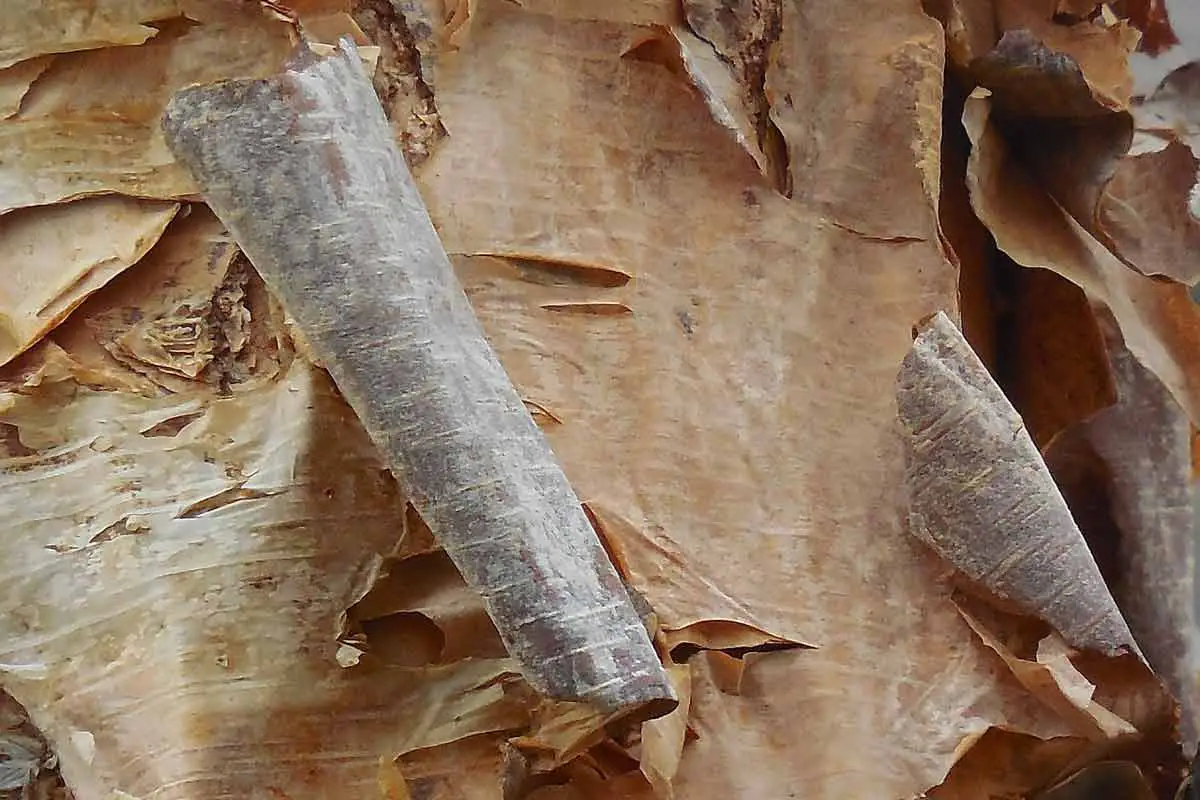
Betula papyrifera is a short-lived birch found in northern North America. Paper birch is named for the tree’s thin white bark, which peels from the trunk in paper-like flakes.
The short life paper birch tree has its main characteristic feature as its unique bark. The whitish, almost silvery bark has a unique contrast with green leaves. It is especially pleasing to see during the fall when some of the leaves turn bright yellow.
During the cold winter seasons, the white trunk matches the white snow to form a somewhat eerie and unique look. If nothing else, this tree will surely give your garden a unique appearance.
This tree’s leaves are 2 to 4 inches long and have double-toothed edges. The little dry fruit (nutlets) grow in clusters on drooping catkins and mature to brown.
Since this is a monoecious tree, the paper birch bears both male and female catkins. The paper birch, like most other birch trees, prefers a damp climate, making it an ideal companion to a stream or pond feature that you may have in your yard.
10. Pin Oak(Quercus palustris)
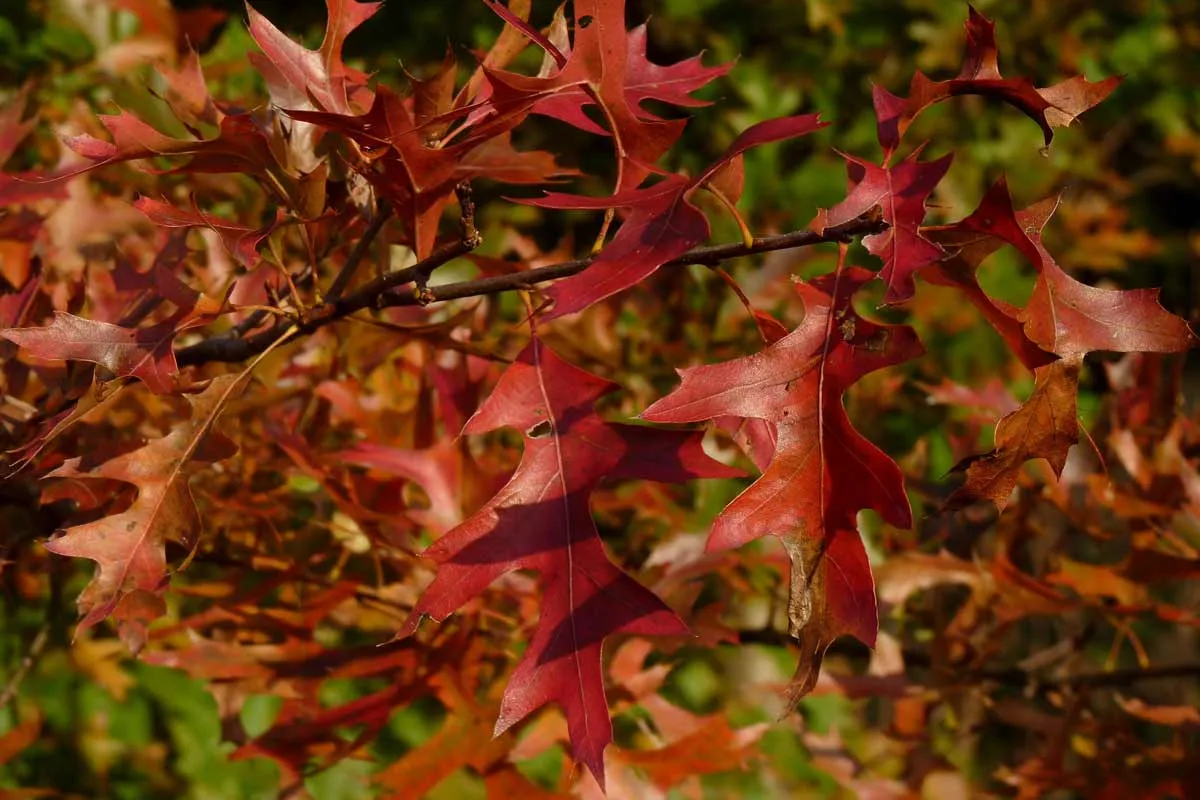
The Pin Oak may not grow as fast as some of the other tree species on this list, it is still fast enough to be officially considered as a fast growing tree. The tree grows an average of about 2.5 feet annually.
The Pin Oak tree is mostly suited for wet soils and enjoys full sun. Thus it makes for an interesting choice as a companion to any water bodies or pond features that you may install in your porch.
The Pin Oak tree has glossy dark green leaves that are visually quite a treat to look upon. They provide shade and make for a picturesque visual during the fall season. That’s when the leaves turn a brilliant russet, bronze or red color.
While the tree doesn’t grow monumentally in size it does reach a decent height of about 60 feet. Along with its impressive tolerance to wet conditions it is generally easy to plant and manage in a small home garden.
Why Choose a Fast-Growing Tree?
Trees give us oxygen.
That is simple enough, isn’t it?
But they do so much more for us than that.
For instance, if you do nothing more than just sit around looking at the trees in your backyard, or wherever else you have designed your garden, you will feel calmer and happier.
That is because, according to many studies, looking at trees helps to lower adrenaline and cortisol levels within your body.
These are the two hormones that are directly responsible for causing stress in humans.
So being around trees is an excellent way to manage your stress and keep your blood pressure in check also.
Obviously then, if you are growing trees, you would also want to enjoy them. It is for this reason that an increasingly large number of homeowners are opting for fast growing trees today, more than ever before.
The best part about these trees? They grow fast… sometimes as much as several feet a year so you may enjoy all of their benefits that much sooner.
How to enhance your trees’ growth potential?
Here is where we come to the age-old nature vs. nurture debate and nowhere is it so obvious as when you are planting your perfect garden of fast growing trees.
Nature may have imbued these fast growing trees with all the right genes for reaching maturity quickly, but a lot of other factors will weigh into making it true in the real world.
For instance, imagine you have planted all ten of these above-mentioned plants in your garden.
Now you’re wondering why these aren’t becoming mature trees fast enough.
Well, the reason is simple. There’s a good chance something is wrong with the quality of soil they’re planted in.
Not only that, a number of other factors could also be weighing in here. These would include the amount of water that the plants are getting, the frequency with which you may be watering them, the amount of sunlight that they have, and even the nutrient content of the soil that they are being planted in.
For this reason, it is essential that before you choose a plant for your garden, try and ensure that you are also aware of the needs of that particular tree.
This would include the kind of soil that the tree grows best in as well as the amount and frequency of water that it needs to grow in optimum conditions.
And of course, always remember, that a good root system as well as annual pruning and proper care will help to keep your plants healthier and maximize their growth potential.
